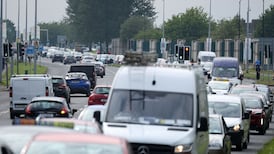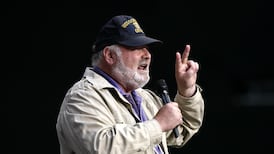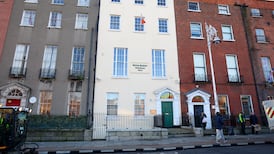No one claims the game is fully evolved, but advances in training, nutrition and physiotherapy mean players are bigger, stronger and faster and football as a spectacle is better than ever, writes Mark Duncan
No championship season should start or finish without a stock-take on the state of Gaelic games. So before the mayhem begins, before we get caught up in the weekly cycle of previews, team news and post-mortems, it might be worth noting that these are halcyon days for Gaelic football. Forget the landslides that passed for All-Ireland finals these past couple of years, the game and its players have never been better.
Think about it: never have teams been as well prepared or better resourced; and never have players had so much access to coaching expertise and medical back-up. The result: across the board (we're talking intercounty here), standards are up, interest is up and recent summers have seen more genuine title contenders, be it for provincial or All-Ireland honours, than any previous era.
Put simply, tradition alone no longer determines who wins and loses.
The simple explanation for rising standards and greater competitiveness in championship football is that knowledge has become more equitably spread.
"All counties have access to expertise and knowledge now," insists Mickey Ned O'Sullivan, the former Kerry footballer and current Limerick manager, who sits on the board of the National Coaching and Training Centre at the University of Limerick.
The past was a different country.
"Winning was self-perpetuating in previous decades," says O'Sullivan, "because you had the experience of winning and the experience of experienced people involved in winning philosophies and they were able to impart to their own counties only. And then it became a vicious circle.
Winning became a vicious circle. Because the weaker counties had no access to knowledge of proper preparation and hence confidence, they never got out of the vicious circle of defeat.
"Now as coaching became open, people found out you hadn't a divine right to be good at football because you were from Kerry and that anyone, with proper training, proper environment, could produce a winning team, given all the proper circumstances . . . it has opened up the whole thing."
It's impossible to put a date on when it all changed. For certain, though, there was no damburst of wisdom; that's not the GAA way. The story of Gaelic football's development has, rather, been one of constant evolution.
Rules changes have, of course, played their part. In the early years of the 20th century, for instance, the reduction of teams from 21 to 17 to 15 a side was critical in steering the game away from its anarchic origins. Just as important, however, were new ideas about team preparation.
Kerry's Dick Fitzgerald, the sport's first superstar, published How to Play Gaelic Football in 1914. Beautifully illustrated, this was the first instructional manual for GAA coaches. Remarkably, much of what it contains still has currency.
Convinced of the supremacy of Gaelic over all other football codes - with no "offside" or "knockon", it avoided the "artificiality" of soccer and rugby - Fitzgerald was an advocate of a scientific and skill-based game. This involved the use of systematic training for big games, including special diets, exercise regimes and massage.
All this undoubtedly helped improve the condition of players and the spectacle itself, but Fitzgerald was clear as to how far it should it go. Any tendency towards professionalism, he stressed, should be firmly resisted on the basis it would tend to "force" special training on players who could afford neither the time nor the expense.
Nor, indeed, did he believe it would be right to ask the public to defray such expenses.
By the middle of the century, however, socalled special training had become all the rage. Its chief advocate was yet another Kerryman, Dr Eamonn O'Sullivan, an extraordinary coach who would prepare All-Ireland-winning teams across five decades. O'Sullivan championed "collective whole-time training" in which an entire squad would go into "a special training camp" for a "daily 24-hour schedule of alternating tuition, rest and play". It reeked of professionalism and the GAA was forced to outlaw it in 1954.
But Dr Eamonn's influence extended far beyond his well-publicised views on training. He imposed on his teams a rigid zonal system that restricted players' movement and compelled them to win their own battles. For a corner forward on one of O'Sullivan's teams, "going for a wander" was not the done thing.
Unfussy, if rigid, this system was challenged repeatedly from the 1920s onwards, but it was never really bettered until the early 1960s, when Kerry were unhinged by the fluid movement of a Down side boasting the likes of Seán O'Neill, Paddy Doherty and Joe Lennon. In that moment, Gaelic football moved on and Lennon, in particular, would prove influential in moving it further.
Mickey Ned O'Sullivan considers Lennon "a major pioneer in Gaelic games coaching". He had, after all, completed a Masters degree at Loughborough University, studying the preparation of teams in soccer and rugby, and, during the 1960s, he wrote two important books on coaching Gaelic football.
He also pressed for rule reform in the GAA and helped, with others, convince the authorities coaching was central to the association's development. This was borne out by the landmark report of the Commission on the GAA, published in 1971, which stressed the manifold benefits of formal coaching and recommended the setting up of a national system of coaching.
It took time for mindsets to change. The commission had been at pains to distinguish between the functions of coaching and training, but this was largely lost in the rush to ape the most successful counties. Mickey Ned O'Sullivan recalls that throughout the 1970s and 1980s there was still hardly any coaching.
"It was all physical training," he says. The case for coaching was not helped, strangely enough, by the emergence of the great Dublin/Kerry rivalry of the 1970s. For all the glamour these teams bestowed on the sport, the lessons drawn by the so-called weaker counties were not necessarily the right ones.
"What happened was the dominant counties at the time were spending an awful lot of time on physical fitness in their training," O'Sullivan recalls. "And then every other county thought the way forward was physical fitness and nothing else. Now Dublin and Kerry had very skilful players, probably the most skilful of all time.
"So Kevin Heffernan and Mick O'Dwyer didn't have to spend an awful lot of time on the skill factor. They spent most of their time on physical fitness, but every club in the country thought that was the way forward."
The culture of laps, of running lads into the ground, was hard to shake. "It was only in the 90s that coaching finally came in," says O'Sullivan.
Old conventions were jettisoned. And while physical training remained vital, it became more ball-based and game specific.
"It's much healthier and it's much more tailor made for the game," O'Sullivan argues. "Players are assessed; their physical fitness is assessed. Programmes are designed for individuals and strength training is designed for individuals based on their individual needs . . .
"Now every aspect of the training session is planned. There's no wasting time, there's high intensity, which is very relevant to the intensity of a game situation. Players are included in the rationale of what's being done . . . Coaches can identify both physical and technical, shall we say, skills factors that players may need and tailor their sessions for that purpose. Everything has a purpose now."
None of this is to suggest Gaelic football is all it should be. This isn't as good as it gets. There is still too much handpassing and the new breed of coaches, for all they have brought to the game, can hardly be absolved of blame for this. Mickey Ned O'Sullivan agrees.
"An awful lot of the drills that coaches use in training now are handpass drills and they become second nature to players," he says. "There's a need for more emphasis on kicking - it's football. But that was the trend we moved into in the 90s and if you look at the stats now there's probably three or four handpasses to every kick in every Gaelic game, which, you know, I wouldn't say is very healthy . . .
"You need a lot more kicking in the game. I think most coaches will tell a corner back that when you're playing it out of defence to handpass, because the foot is less accurate and you can't afford turnovers, so it's a safety factor.
"But it is a major factor in how the game is perceived; as the traditionalists would say, handball rather than football. I think we've got to evolve the game a little bit more. It's far from the finished article."
Where the game goes from here will be influenced somewhat by what happens over the coming months. The evolution is constant, but whoever emerges from the pack this summer will leave, for a time, their own particular impression on the sport. How they prepare, how they play, how they conduct themselves on the field will set a template others will inevitably want to replicate. Winning ways have that effect.
For now, though, let's just remember where Gaelic football was just a decade or two ago and take satisfaction from the certainty that, countrywide, the game and its players have never been better.







